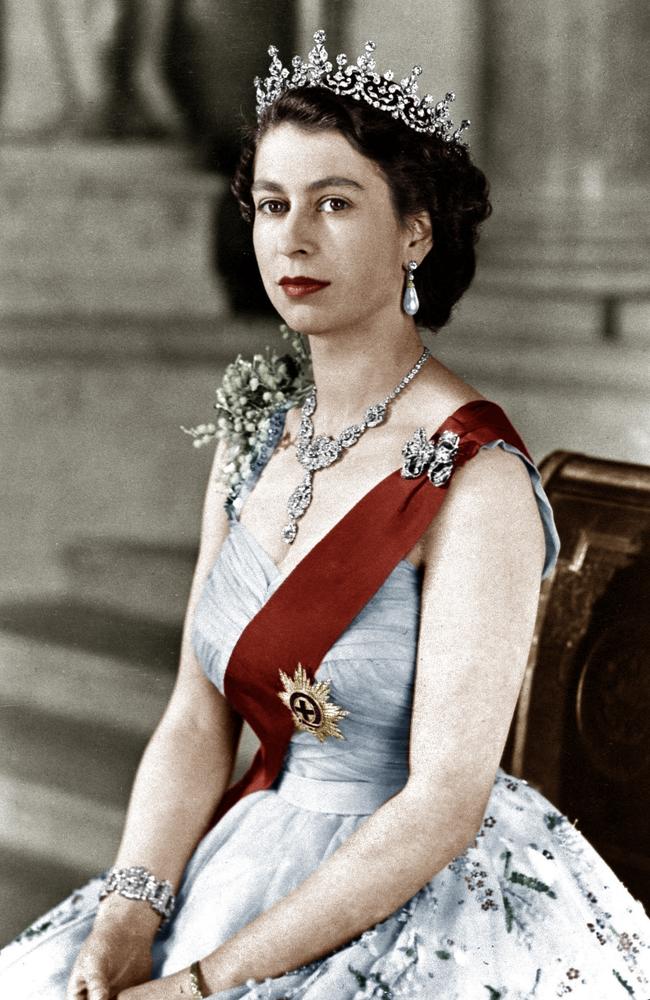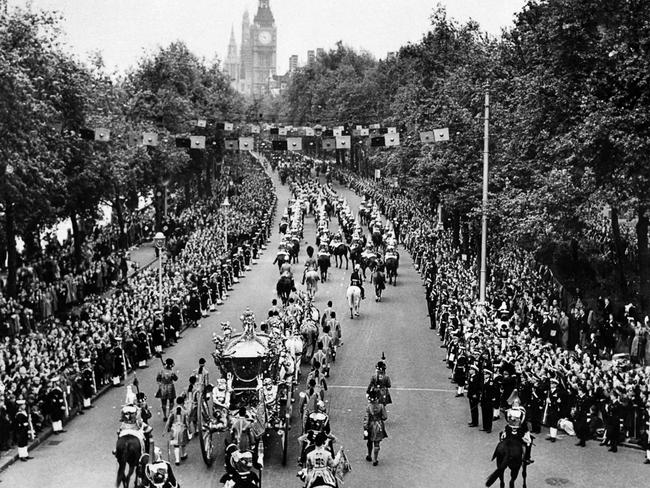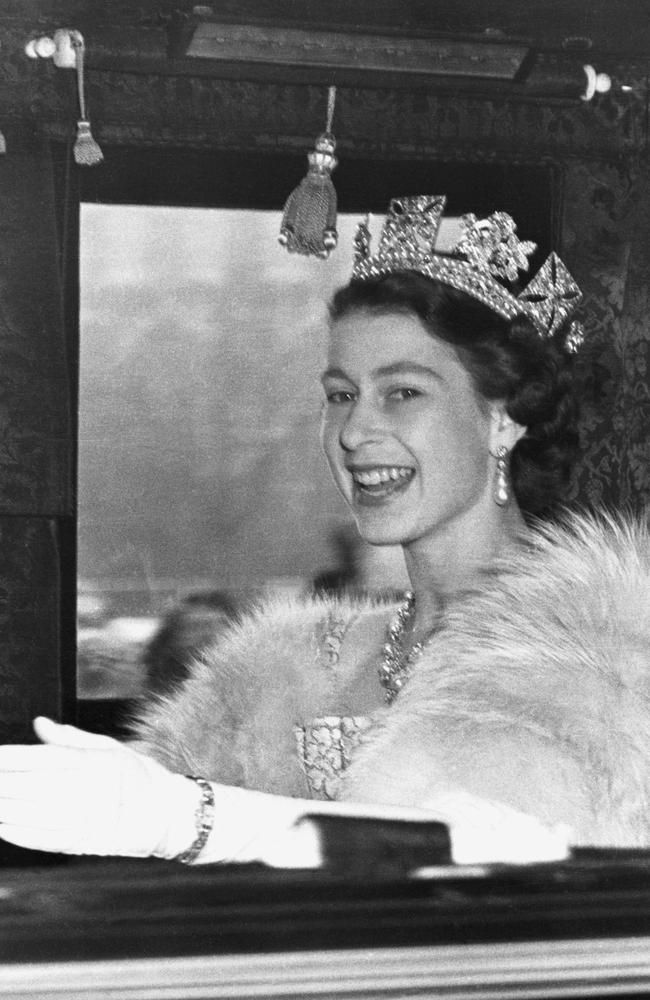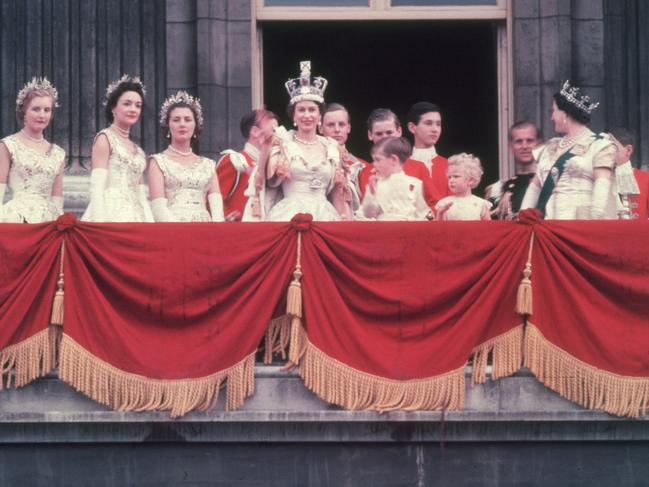Queen Elizabeth II took her place at the ‘heart of a living drama’ after Coronation was televised
This is how Queen Elizabeth II’s coronation on live TV changed the relationship between the monarch and people of Britain forever.
Royals
Don't miss out on the headlines from Royals. Followed categories will be added to My News.
It had been the setting for every coronation since the Norman Conquest of 1066 but, for the first time in history, TV cameras would be allowed into Westminster Abbey to catch every golden moment of the crowning of Queen Elizabeth II.
The glittering scenes, in all their antiquated, gleaming glory and never before witnessed by the great British public, would for the first time be watched in front rooms around the country.
As the 39th sovereign to be crowned at the Abbey, commoners would be allowed a glimpse of the great and the good, among a sea of robes and tiaras, as the Queen took her sacred vows.
With Britain still recovering from the horrors of World War II, and with food rationing still in place, the crowning of the 27 year-old Queen brought a renewed hope to the country and heralded the dawning of a new Elizabethan age.

But this was still a Britain where the post-war ideals of self-sacrifice and deference to one’s ‘betters’ held firm, the mystique and aloofness of the royal family helping to maintain the status quo between the upper classes and the rest.
The image of the Queen and Prince Philip making their way to Westminster Abbey in the gleaming, fairytale, gold State Coach pulled by eight mighty grey geldings, the diamond and pearl George IV state diadem on her head, served to set the scene for the splendour and solemnity of the ceremony inside the abbey, magnificence at which, until then the public could only have guessed.
There viewers could see her coronation gown, intricately embroidered with the floral emblems of nations of the UK and the Commonwealth, including the Australia wattle, and the moment the priceless St Edward’s Crown was placed on her head.

More than 27 million people, from a population of 36 million, watched the Coronation, television democratising the ceremony for the first time.
It provided a window into a world never before seen by most of the population – and some believe opened the royal family up to scrutiny which they had never before experienced.
But, it may never have happened if the traditionalists at Buckingham Palace – and Winston Churchill – had their way.
There was fierce debate whether it should be televised at all – the Queen had opposed
televising her wedding – and even once it was agreed the level of access given to the cameras caused deep divisions.
Cabinet Secretary Sir Norman Brook, warned, presciently, that nothing would ever be the same again if the ceremony was to be televised.
“May this not be an awkward precedent?” he asked.
“What argument will remain for refusing television facilities of [for example] Royal funerals or weddings, religious services and even proceedings in the House of Commons?”
Eventually the Queen agreed, bringing the royal family into the homes of her subjects as never before.

Royal historian Hugo Vickers wrote that the “successful televising of the Coronation irrevocably changed the relationship between monarch and people.
“The great moments of the Queen’s reign, and some of the unhappier ones too, have been relayed to us on screen, “ he wrote.
“She has taken her place at the heart of a living drama. Even the humblest of the Queen’s subjects can feel a part of the great occasions of state – and exercise a scrutiny that would once have been unthinkable.”
Mr Vickers told News Corp there had been initial reluctance to broadcast the Coronation “largely because of the additional stress it would place on the Queen.’’
He said the head of religious broadcasting at the BBC had made the point that while a lot of people were no longer attending church, services were broadcast on radio into people’s homes.
“That was thought to be a wonderful way of reaching people,’’ he said.
“So to deny them the chance to see the Coronation, which was such an important thing, it would be a great pity.
“And of course, it did have a huge impact.
“Not only were people able to share it, as it actually happened, on tiny little sets with flickering black and white images … people bought sets specifically to watch the coronation.’’

Mr Vickers said there were “very, very stringent rules’’ around what the BBC could film or broadcast during their 5.5 hour coverage, and the Queen being anointed with the holy oil, and taking communion, were not shown.
“But there was this beautiful moment where the BBC cameraman saw the Queen coming out and she had on the Imperial State Crown.
“She was coming down the aisle and he just couldn’t resist it, he just went in for a close-up, and that footage is absolutely glorious, so good for him for doing it.
“That was the beginning I suppose of the television age.’’
By allowing the cameras into Westminster Abbey, the Queen made one of the most fundamental shifts in the monarchy of the 20th century.

Indeed, the Queen herself, in her humble Annus Horribilis speech in 1992 said: “No institution, City, monarchy, whatever, should expect to be free from the scrutiny of those who give it their loyalty and support, not to mention those who don’t”.
Former Prime Minister Clement Attlee proclaimed at the time: “Let us hope that we are beginning a new Elizabethan age no less renowned than the first.”
Whether she has achieved that is doubtful, as she saw her dominions shrink, rather than expand and was Queen at the time of the Suez Crisis, which saw Britain humbled as a world power, but she has also overseen massive change in the way the family interacts with the people.
In allowing the cameras into her life, she gave her subjects a window into her world that would never be the same again.
Originally published as Queen Elizabeth II took her place at the ‘heart of a living drama’ after Coronation was televised




